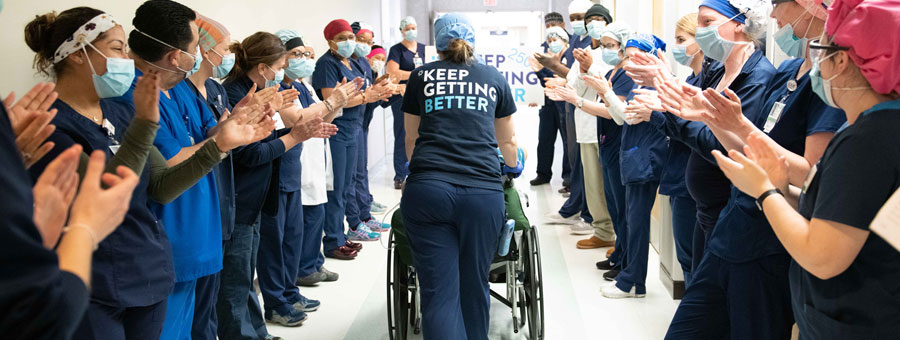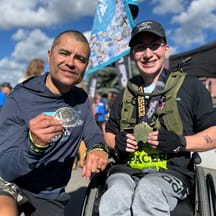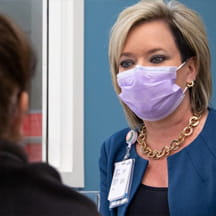Children’s Hospitals Today gathered three children’s hospital executives for a virtual roundtable. The following is an excerpt of that conversation.
The Panelists
Dustin Lipson, Administrator, Intermountain Primary Children’s Hospital, Salt Lake City, Utah
Myra Davis, Chief information and innovation officer, Texas Children’s Hospital, Houston
Mark Scheurer M.D., Chief, Children’s and Women’s Services and chief medical officer, MUSC Shawn Jenkins Children’s Hospital, Charleston, South Carolina
On how COVID-19 has affected their organization’s 2021 strategic priorities
DUSTIN LIPSON: The biggest impact we’ve seen is an acceleration of pre-COVID trends. While the pandemic has had a significant financial effect, we seem to be weathering it and are adjusting to that dynamic. As we look forward, we’re thinking about things like digital innovations around telehealth, big data and genomics, and the resiliency of our teams.
These are things that were important pre-COVID, and their importance has been amplified and accelerated during the pandemic. Investments in those areas are more important now than ever. For us, planning for 2021 is about identifying those trends and understanding how we can invest in them while still coming out of the financial implications of COVID.
MYRA DAVIS: I echo those points. We started some strategic initiatives prior to COVID that focused on creation of a strong data analytics program—using artificial intelligence to accelerate providing data or insights into pockets of the organization so the leaders can make meaningful decisions faster. We also began homing in on the patient experience, working to advance our digital platform by “opening the virtual doors” with online scheduling.
That’s something we’ve accelerated since the pandemic began. The last area of focus is what I call the back office—creating a stronger operations model in the areas of finance, supply chain and human capital. We’ve had conversations around whether we should stall this project due to COVID, but when we looked at the data, we needed to lean into it and get smarter in the back office.
MARK SCHEURER: COVID-19 has changed our strategies in that it’s refocused us. We’ve been hyper-focused in looking externally. How do we leverage all this infrastructure that we’ve invested in? How do we transition to a world where COVID exists, but we’re able to develop and grow programs at the same time? And how do we do that on thinner margins and the need to reprioritize things?
Where we’ve landed so far is a series of strategies which are very community focused. This is not just about a virus that’s happened in the last year; it’s awareness around a lot of deep, infrastructural problems of our country. We’re looking to bring people together—whether they be not-for-profit health systems or community partners—in a way that we weren’t bold enough to suggest or, frankly, open enough to listen to prior to 2020. We all engage in community partnerships, but I think we’ve really challenged what that means for us.
LIPSON: The really important point there, at least from my perspective, is how do we continue to progress value-based care and do so in a way where we’re financing these activities in a sustainable way? The notion of deeper partnerships and working within the community to promote and protect health—especially in areas that don’t have those resources—is an expensive endeavor. It was expensive before, but now with COVID’s impact on the economy in many of these areas, it’s even worse.
DAVIS: Very true. The membership for our health plan has increased by almost a half-million members since COVID hit. So, our focus is on looking at various care models to serve that growing population differently—especially in the areas of behavioral health, obesity and psychology.
On ensuring the well-being of caregivers
DAVIS: Recognizing the fatigue of our caregivers, among the efforts implemented by our quality team and physician leadership here were to create wellness rooms, timeouts and added break times. People are tired. They’re burned out. They’re increasingly accepting the reality that life is short, especially when you’ve lost someone during this pandemic. And unfortunately, we’ve had pockets of caregivers who also have gotten COVID—that obviously presents additional challenges.
SCHEURER: I can commiserate. We have some programs here like those Myra described, but I’m really worried about the resiliency of our staff and their ability to perform at the level they want to perform. As we all know, we’re lucky to work with people in children’s health care who are so committed to a mission.
It’s what brings us all together—clinical or non-clinical, we all think that’s pretty special. But for the people on the front line, there’s a limit to their ability to perform at a high level with this much ongoing stress. I don’t have a great answer for long-term solutions, other than to continue being creative and lean into new approaches like flexible work schedules and those sorts of things, which I think really matter to people.
DAVIS: I think that needs to be intentional, too. As we focus on 2021 and beyond, there’s a reset that needs to happen with the workforce. Organizations are going to have to be very intentional and focused on people for a period of time in all aspects and fields—just to regain the trust, solid culture and foundation that was disrupted by this uncertainty we’ve been living with for almost a year now.
LIPSON: The other thing we’ve thought about is the pace of change. We’re often driving extremely fast with a lot of change that, obviously, all comes down to the front line in one way or another. How much change can we expect them to be able to digest while dealing with these emotional challenges?
For us, when we’re talking about priorities and goals for next year, my message has been “it’s the same thing as it was last year.” We’re going to focus on taking care of each other, we’re going to focus on taking care of the patient, and that’s it. We’re not going to change a whole bunch of other stuff. That means prioritizing things differently than we have in the past; the priority list must get smaller. It’s not ideal, of course, but taking care of our caregivers is the most important thing we do so they can take care of our patients.
SCHEURER: Definitely. And even if an initiative isn’t particularly helpful to a specific care team member, if we keep offering different things to them, it shows our willingness to acknowledge the situations they’re in. For example, providing different childcare opportunities—what does childcare look like if all our schools shut down in the middle of the winter again? We each have our own programs, but are we leaning into changing them or adapting them? Those are the things we must continue to be adaptive and receptive to evolving. Even more importantly, we need to be humble and more receptive to listening to what’s coming in around us.
On pandemic-inspired improvements with staying power
LIPSON: A couple of things come to mind for me. I think one is a bit more informality in our culture—connecting with the human side. You’re having a meeting online at 9 p.m. as the dog runs across the screen, the kids are screaming and someone’s in their pajamas stuffing food in their mouth. It all becomes OK. I think accepting that we’re humans first and executives or caregivers second has become more normalized. That’s something I hope sticks.
Also, our thoughts around physical space have changed dramatically. Whether that’s caregiving space—it can be a clinic, a hospital in an outlying community or a partnership where we’re a hospital within a hospital—the entire notion of how we think about physical space has changed.
So, for a patient who wants to be cared for at home—by a community rural hospital that can do telemed, tele-ICU and virtual consults—we can build an entire virtual subspecialty setting in another hospital without having any physical footprint there other than the technology. All those things are becoming more mainstream for us—and more of a priority—and that really was born out of the pandemic.
SCHEURER: Those are great points, and I hope we don’t lose those things either. I hate the pandemic, but there is a lot of upside to all this if we can challenge ourselves to think about what those things are. A prime example of that is the growth of telemedicine. Among many benefits, it’s allowed the behavioral health visit in the home. Our developmental pediatricians are really excited about the possibilities—while they like to directly observe and interact with patients, they get to see the home environment, which is really insightful.
DAVIS: We have opportunities there, but just because we build it doesn’t mean they’re going to come. The opportunity we have is the marketing aspect of it. By that, I mean targeting specific populations, speaking directly to them and messaging them to come in through an online door whether families need a video visit, educational materials and so on. We have a chance to do something differently, and our marketing arm must get on that digital bandwagon with us.
This is where health care can potentially be challenged and must get comfortable with being uncomfortable by having a multidisciplinary group that speaks to the dynamic ways of leveraging a digital platform to advance care for targeted populations. We must target those populations that are going to be affected most by this pandemic.
LIPSON: Exactly. What we are talking about is meeting families and patients where they are and where they want to be met. This has affected our organization’s thinking around expanding our family advisory councils. While we continue to engage with our Family Advisory Council, we are also working to develop a Hispanic Family Advisory Council to talk us through the issues that are relevant for our predominantly Hispanic communities.
But what about autism and sensory disorder patients and their families who have struggled to engage with other families experiencing similar things? We are creating new groups and new family advisory councils based on the specific needs of those communities, families and individuals. I see that as an exciting development that’s happened over the past year because of the pandemic.
SCHEURER: I’m glad you brought that up. On a whim, we started doing a weekly virtual coffee hour with our main PFAC (Patient and Family Advisory Council), and it’s great—the best it’s ever been. We built a facility with patient and family engagement and that was all real, but this direct person-to-person engagement via a virtual platform is powerful and quite frankly, we stumbled into that. It’s been fantastic and only made us think about how we can do more things like this. It’s a small thing, but it’s an upside to all of this as well—this chance to connect. And this is totally going to stick beyond the pandemic.
On the long-lasting effect of the pandemic on pediatric health
DAVIS: I’m hearing from my colleagues who are direct care providers that there is concern about the ramifications of this year’s challenges on long-term pediatric health. Whether that’s elective surgeries that have been postponed or economic challenges delaying care visits, we’re seeing that—and it is a very valid concern.
There’s also a concern about obesity being on the rise because families during the pandemic have not had the ability to get care for their kids around that. Then—if by chance they’re able to get employment on the other side of the pandemic—they’re not going to want to leave work for appointments for fear of losing those jobs. It’s a vicious circle, but I could see all those scenarios playing out.
LIPSON: I agree with everything Myra said. I would also add this has reinforced the importance of the affordability of health care. A significant number of bankruptcies are still due to health care bills, and I frankly think that’s only going to go up with this pandemic. We are positioned to disrupt those things to make health care a more affordable, personable, real and connected experience that’s accessible for families. It’s our responsibility to do that.
SCHEURER: In our community, we have enormous health disparities that existed at baseline levels pre-pandemic. This presents us with opportunities for growth in the middle of the pandemic and afterward—but also a lot of challenges.
We all share a deep concern that health disparities are going to have a generational impact on children and families. For years to come, the financial and social stability of families will be affected. The pandemic has severely influenced the ability of a family to receive longitudinal care in a community of poor resources. That’s where we’re trying to pivot and prepare for what we think is at least a five-year journey that must look outside of our COVID-19 management operations.
DAVIS: And I think the best thing an organization can do is to continue to speak to their mission and make sure their communities know we empathize with what they’re going through. Maybe there are alternative ways to meet them where they are—and not assume they’re going to come to us. Ultimately, we need to change the ways we care for our communities given that we have an awareness and understanding of what our communities are going through.



